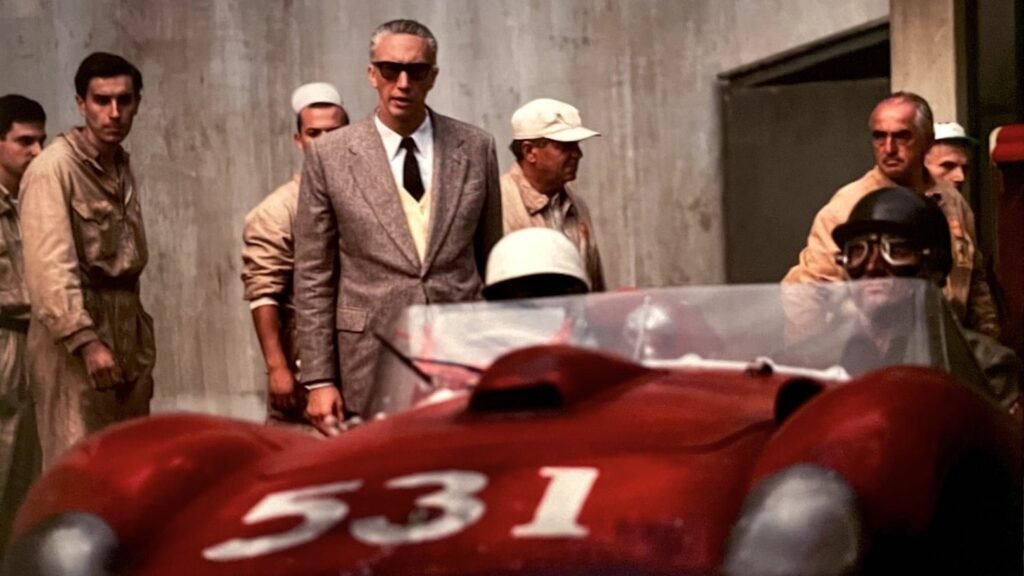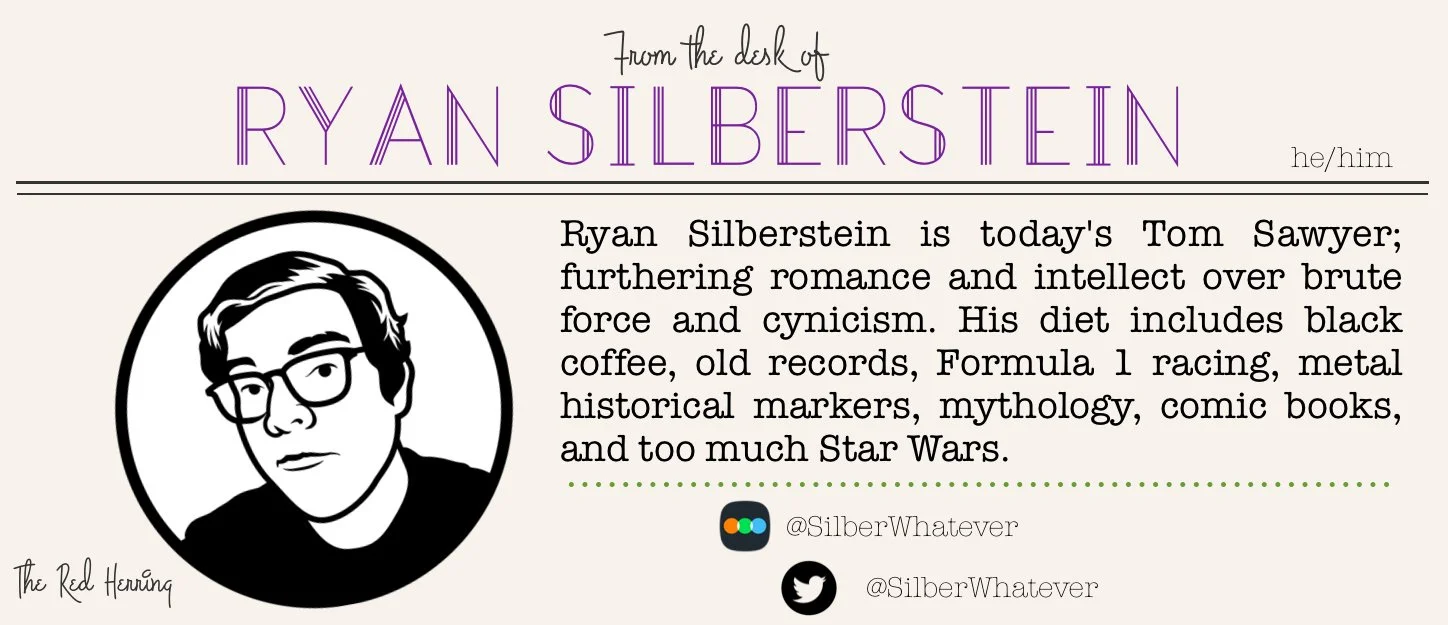FERRARI is a haunted, obsessive relationship drama powered by beautiful engines
Ferrari
Directed by Michael Mann
Written by Troy Kennedy Martin
Starring Adam Driver, Penelope Cruz, Shailane Woodley, Patrick Dempsey
Rated R
Runtime: 2 hours, 10 minutes
In theaters December 25
by Ryan Silberstein, Managing Editor, Red Herring
Enzo Ferrari (Adam Driver) is a man haunted by death. Auto racing is one of the most dangerous sports in the world, especially in the first 100 years of its development, when the safety of racing drivers (or spectators) was not a priority. Set in 1957, the year after his son Dino passed away from Duchenne muscular dystrophy, Enzo is in mourning, while also trying to keep his business, marriage, and extramarital relationships functioning. All of this leads up to the Mille Miglia, an annual 1,000 mile race across Italian backroads.
Of course, Enzo Ferrari is obsessed with motorsports, the design of an engine more important than keeping his wife Laura (Penelope Cruz) happy. Seemingly his every waking moment, whether ragging on the local football team at the barber shop (the difference between them and Ferrari? “We learn from our mistakes.”) or trying to get his hands on enough money to keep his dream going. But football aside, Ferrari’s obsession has become Maranello’s obsession. The small Italian town best known for being the home of Ferrari is permeated by the sound of engines and the smell of gasoline. Even the church sermons touch on speed and performance, most of the men in the pews holding stopwatches as they think more of horsepower than they do the body of Christ.
Enzo’s world is one defined by control. But like his engines, there is a delicate nature to his desire for performance. Even a momentary loss of control can change everything about his plans. The only reason Ferrari manufactured cars for consumer purchase was to fund Enzo’s passion for building race cars. The entire factory was dedicated to designing and building race cars, with their sports cars almost an afterthought. Yet those afterthoughts are some of the most beautiful and sought after cars in the entire world. There is a beauty in the design, and Enzo tells his son Piero (Giuseppe Festinese)–the son he has with his mistress Lina Lardi (Shailene Woodley)–that the better something works, the more beautiful it is. This is Enzo’s goal, and yet attaining that efficiency in his engines does not always translate into wins or podiums. There is always a human element, the driver. By definition, racing is about making the most out of your imperfections. And the racing drivers are what make the sport such a deadly passion and a terrible joy.
As a film subject, Enzo Ferrari fits neatly into Mann’s filmography. The auteur’s work primarily focuses on obsessive men who put their own goals above anything else, and who live and die by their own code. It is a unifying theme across the majority of his filmography from Thief through Blackhat, and Ferrari is no exception. Ferrari is also the third biopic from Mann so far, Ferrari’s focused narrative and relatively small scale make it more successful than either Ali or Public Enemies. But the Mann film that kept coming to mind for me was Collateral. Roger Ebert described that two hander as “essentially a long conversation between a killer and a man who fears for his life.” Instead of an uneasy partnership between a contract killer and a cab driver, Ferrari is a portrait of a marriage frayed by grief. Enzo and Laura cofounded Ferrari together, and she is as tangled in his business as she is in his personal life. They are tied to each other in so many ways.
The central tension of the picture is shown in sharp relief against the shadow of Dino’s memory. Enzo still loves Laura, both of them mourn their son in their own ways, and scenes at the Ferrari mausoleum are particularly raw. Both Driver and Cruz handle these scenes–mostly pure performance with no one else to play off of–with a depth of emotion that is equally enchanting and heartbreaking. While Laura and Enzo have an arrangement about their fidelity, “We agreed you can fuck whoever you want but you have to be here before the morning maid,” Laura tells him as the maid in question looks over her shoulder. How could Enzo ever tell her about Piero? He wants the boy, his only living son, to be his heir now that Dino has passed away, but he worries it would break her spirit. There is a scene where Enzo, Laura, and Lina all attend the same opera, and through the power of editing and performance, Mann captures the distinct feelings all three are feeling. What makes Mann’s work sing is the finesse that shines through his editing and imagery, and it is just as important to the character moments as it is to the racing scenes.
Enzo is not just haunted by Dino’s death, but also the deaths of his father and brother, both succumbing to a flu outbreak in 1916 (Enzo’s mother likes to remind him that his brother should have lived instead). When speaking to Dino’s spirit at the mausoleum, he says he hears their ghosts speaking to him. And throughout the film, more deaths follow, not of Enzo’s family members, but of the drivers who work for him. Each of these deaths take a toll on him, despite his outward appearance to the press. All of this–the deaths, his marriage, the future of Ferrari–comes to a head in the film’s final sequence depicting the 1957 Mille Miglia, an event itself marked by tragedy. What are the things we desire, and how do we measure that want against the pain and damage they can cause? This is the fundamental core of Ferrari, dressed up in operatic style and exquisitely cut together to the sound of roaring engines.


